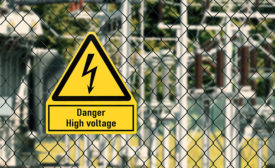Safety & Health Best Practices
Digital Edition Exclusive
Get your hands on the right safety gloves
Safety gloves, correctly sized and engineered with the correct materials, defend workers from virtually any type of hazard
April 1, 2020
Best Practices
The toughest job in safety? It could be cleaning up toxic messes
April 1, 2020
Training
IEEE 1584: What to know about your next arc flash analysis
Complex calculations
April 1, 2020
Stay proactive in your workplace with hazard signs, alarms, and signals
Alerts on display
April 1, 2020
Rethinking Traditional Safety, Part 5
How we lose safety judgment & skill development
April 1, 2020
Become a Leader in Safety Culture
Build your knowledge with ISHN, covering key safety, health and industrial hygiene news, products, and trends.
JOIN TODAYCopyright ©2025. All Rights Reserved BNP Media.
Design, CMS, Hosting & Web Development :: ePublishing










